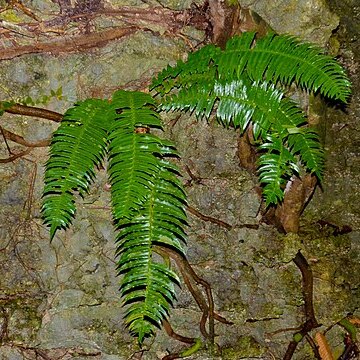Rhizome ascending, stiff, short, thick, apex and base of stipes with dense scales; scales brown, linear, up to ca. 1.5 cm, margin with numerous regular sharply pointed teeth. Fronds 70-90 cm; stipe 25-55 cm, 4-5 mm in diam. at base, brown; lamina bright bluish green above when fresh, narrowly elliptic-lanceolate, 50-65 × 12-25 cm, 12-25 cm wide at middle, base attenuate, 1-pinnate, apex long acuminate; pinnae 10-15 pairs, alternate, articulate to rachis, lanceolate, middle pinnae 8-14 × 1.5-2.8 cm, base truncate on acroscopic side, cordate on basiscopic side and auriculate over rachis, margin undulate-serrate, apex subacuminate or caudate; veins free, 4-forked, reaching margin; texture papery; short erect multicellular hairs at pinna base near rachis, along costa abaxially, and sparsely at pinna margins and on surfaces. Sori orbicular, dorsal on veinlets, in 1-4 rows on each side of costa; indusia peltate, with a few minute marginal hairs; spores monolete, with perispore folds, granular.

